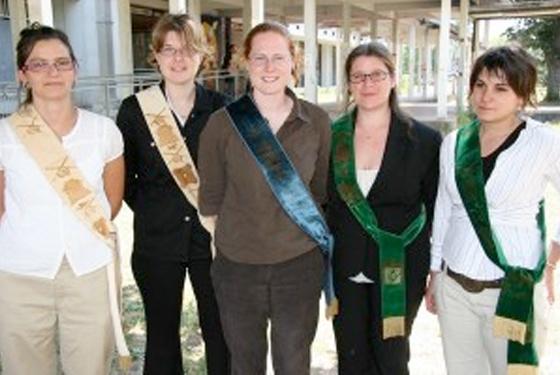Male and mixed societies
During the largest part of its history, the Compagnonnage concerned only crafts practised by men. The necessary physical strength (building trades, tannery, bakery, etc.), the dangers linked with the long journey and the socio-cultural environment made the admission of young women in the craft brotherhoods unthinkable.
During the largest part of its history, the Compagnonnage concerned only crafts pratised by men. The necessary physical strength (building trades, tannery, bakery, etc.), the dangers linked with the long journey and the socio-cultural environment made the admission of young women in the craft brotherhoods unthinkable.
As machines made work less strength-demanding, public safety markedly improved and male/female equality got re-examined, some of these associations were brought to consider the mutation from all-male to mixed status. In 2004 the Association Ouvrière des Compagnons du Devoir adopted this reform and the first woman was admitted in 2006 among the stonemasons. Others followed in various crafts (upholstery, joinery, bakery, garden and landscape design). Some dissenting movements started the trend as early as 1978.

Young women adopted as Aspirants du Devoir, wearing their “colour”
